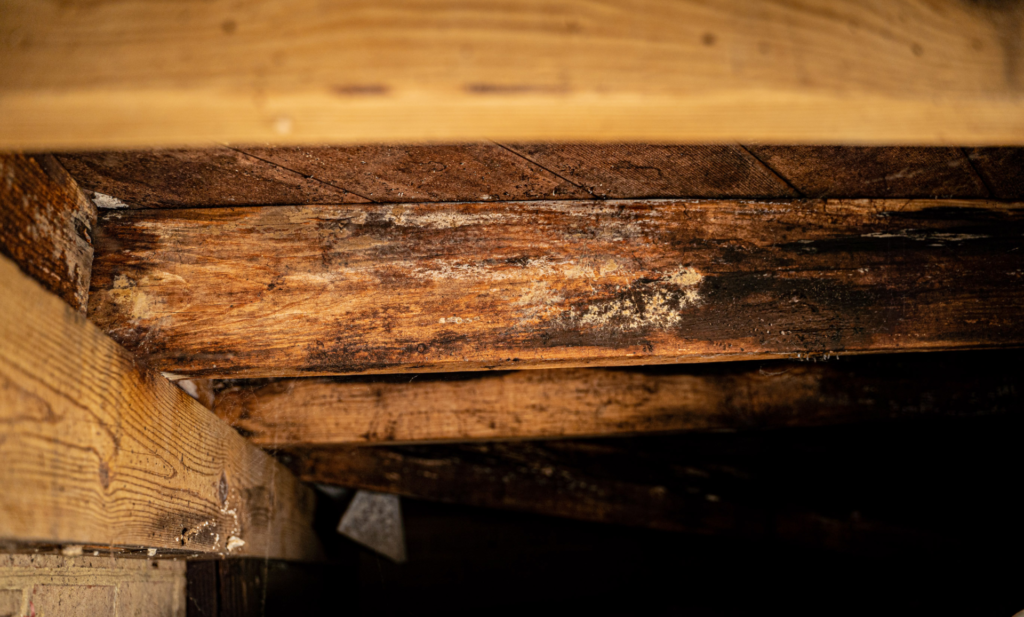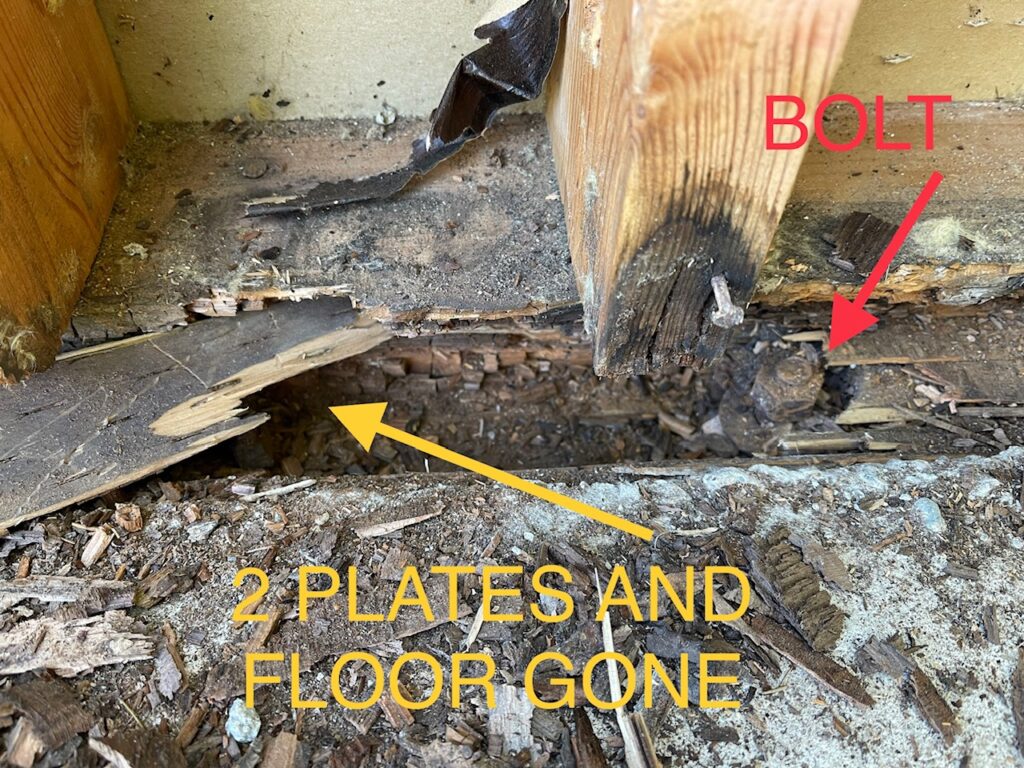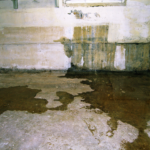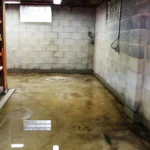Protect Your Basement from Wood Rot
Wood rot has been a persistent issue for homeowners for decades. This fungus infiltrates the wooden structures, floors, and walls of your home, leading to significant property damage over time. Why is that? Because wood rot thrives on wood.
As a living organism, wood rot requires sustenance to survive. In nature, it plays a vital role in the ecosystem by breaking down dead trees. However, the wood used in your home is also derived from dead trees, making it susceptible to this fungus. In damp environments, such as inadequately waterproofed basements, wood rot can quickly establish itself.
Addressing wood rot is crucial for safeguarding your home and preventing costly damages. Basements, in particular, are ideal breeding grounds for wood rot, especially if they have moisture issues. Implementing proper waterproofing measures—for example, dehumidifiers and effective drainage—is essential to keep wood rot at bay.
Struggling to manage water in your basement? Let’s delve into how you can develop a tailored waterproofing solution for your home.


Identifying Wood Rot
Visible fungal growth indicates that wood rot has taken hold. These growths are typically localized to areas where the wood rot is concentrated, so the more mushroom-like formations you see, the more severe the infestation. Fungal growths can also appear as lichen-like fuzzy patches. Keep in mind that removing these growths will not eliminate the wood rot; they merely indicate its presence.
Check all wooden structures for these growths, including the ceiling, as heat rises and moisture often collects in that area.
While high humidity doesn’t cause wood rot, it signals that your basement is conducive to its growth. Wood rot flourishes in damp environments, making proper waterproofing essential. Elevated humidity levels in your home or basement indicate a problem that may require installing a dehumidifier, enhancing your sump pump, or repairing leaking window wells or plumbing.
High humidity can lead to various issues in homes, including increased energy bills, pest infestations, and mold. Maintaining your home’s defenses against water and humidity is vital for its overall health.
As wood rot consumes timber, it becomes soft and crumbly, losing its structural integrity. This results in a spongy sensation when pressure is applied to the compromised wood. You may also observe visible cracks that follow the natural grain or appear where the fungus has caused the most damage. These cracks are often where mold growth emerges.
Given enough time, the weakened wood may buckle under its own weight or the weight of whatever it supports.
Patches of wood that are darker than their surroundings indicate dampness or wood rot. This can be an early warning sign of trouble. Don’t overlook persistent damp spots, especially if they remain localized.
Even if damp areas begin to dry out due to changes in weather or resolved humidity issues, damage may still linger in rotten wood, making it unsafe. In such cases, it’s important to take action. Contact our experts for a free inspection to determine if wood rot has invaded your home.
Why Wood Rot Starts
Wood rot begins when wood remains consistently damp, regardless of whether the moisture comes from high humidity or poor drainage in the basement. To these tiny organisms, any form of dampness creates an ideal environment for fungus to thrive. This is why managing moisture is essential in preventing wood rot.
To effectively safeguard your home, it’s important to ensure your basement is properly waterproofed. Contact a Wet Basement Services professional for a robust waterproofing system tailored to your basement.
FAQs About Wood Rot in Basements
Protect Your Home with Three Yearly Inspections
Wood rot can inflict significant damage to your home in just a few years. For this reason, we recommend inspecting your basement and crawl space for signs of wood rot at least three times a year. If you live in a high-humidity area and your basement isn’t waterproofed and insulated, these inspections become even more crucial. The same applies to your crawl space.
Make sure your inspections are comprehensive. Any irregularities, including any of the warning signs mentioned earlier, should prompt immediate action. Contact a local expert who can provide the necessary insights and waterproofing solutions for your home.




